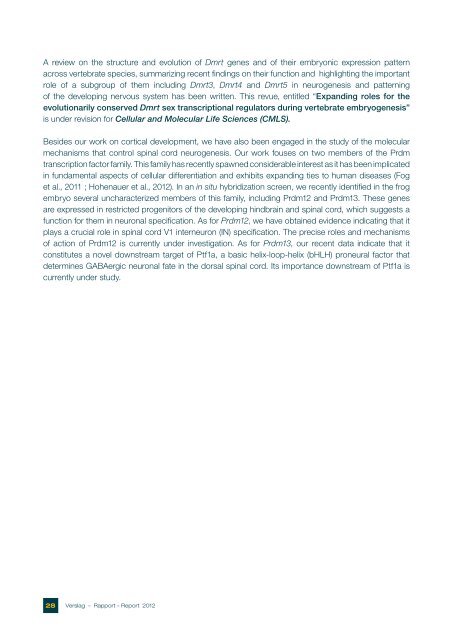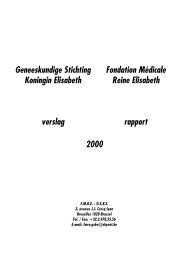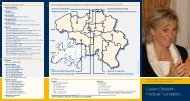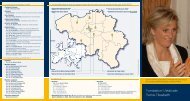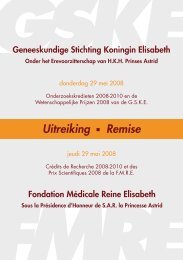Verslag – Rapport – Bericht – Report - GSKE - FMRE
Verslag – Rapport – Bericht – Report - GSKE - FMRE
Verslag – Rapport – Bericht – Report - GSKE - FMRE
You also want an ePaper? Increase the reach of your titles
YUMPU automatically turns print PDFs into web optimized ePapers that Google loves.
A review on the structure and evolution of Dmrt genes and of their embryonic expression pattern<br />
across vertebrate species, summarizing recent findings on their function and highlighting the important<br />
role of a subgroup of them including Dmrt3, Dmrt4 and Dmrt5 in neurogenesis and patterning<br />
of the developing nervous system has been written. This revue, entitled “Expanding roles for the<br />
evolutionarily conserved Dmrt sex transcriptional regulators during vertebrate embryogenesis”<br />
is under revision for Cellular and Molecular Life Sciences (CMLS).<br />
Besides our work on cortical development, we have also been engaged in the study of the molecular<br />
mechanisms that control spinal cord neurogenesis. Our work fouses on two members of the Prdm<br />
transcription factor family. This family has recently spawned considerable interest as it has been implicated<br />
in fundamental aspects of cellular differentiation and exhibits expanding ties to human diseases (Fog<br />
et al., 2011 ; Hohenauer et al., 2012). In an in situ hybridization screen, we recently identified in the frog<br />
embryo several uncharacterized members of this family, including Prdm12 and Prdm13. These genes<br />
are expressed in restricted progenitors of the developing hindbrain and spinal cord, which suggests a<br />
function for them in neuronal specification. As for Prdm12, we have obtained evidence indicating that it<br />
plays a crucial role in spinal cord V1 interneuron (IN) specification. The precise roles and mechanisms<br />
of action of Prdm12 is currently under investigation. As for Prdm13, our recent data indicate that it<br />
constitutes a novel downstream target of Ptf1a, a basic helix-loop-helix (bHLH) proneural factor that<br />
determines GABAergic neuronal fate in the dorsal spinal cord. Its importance downstream of Ptf1a is<br />
currently under study.<br />
28<br />
<strong>Verslag</strong> <strong>–</strong> <strong>Rapport</strong> <strong>–</strong> <strong>Report</strong> 2012


